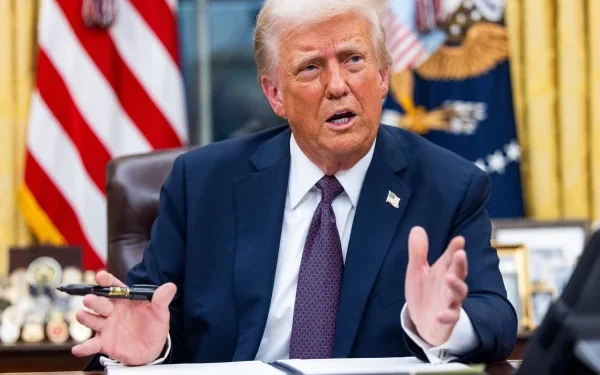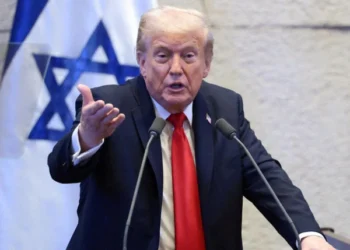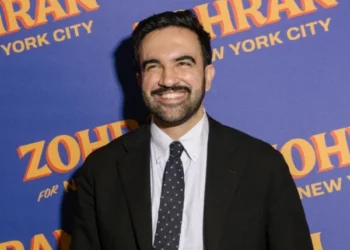In a dramatic revelation that has sent shockwaves through international diplomatic circles, U.S. President Donald Trump has reportedly approved plans for a potential military strike on Iran, according to a report by The Wall Street Journal. However, the final order to launch the attack has been deferred, as Washington hopes that Tehran will reconsider its nuclear ambitions and return to negotiations.
The report, citing three informed sources, indicates that Trump held an intense consultation with top national security and military advisers on Tuesday night, during which the outlines of a strike plan were approved. The target of the proposed operation would be Iran’s heavily fortified nuclear facilities, including the Fordo uranium enrichment plant, which is built deep within a mountain and considered one of the most secure nuclear sites in the world.
This development comes at a time of heightened geopolitical tensions in the Middle East, especially amid an escalating confrontation between Iran and Israel, and growing concerns over the United States’ involvement in the region.
Trump’s Iran Strategy: Pressure Through the Threat of Force
According to the Wall Street Journal report, President Trump’s strategy appears to center on exerting maximum pressure on Iran through both economic sanctions and the looming threat of military force. While the strike plan has not yet been executed, Trump’s actions suggest a calculated move designed to corner Iran diplomatically while keeping the military option visibly on the table.
“He [Trump] clearly said in a conversation with reporters that he may or may not attack,” the report noted. “He reiterated his demand for Iran’s unconditional surrender and hinted that the next week could be very important—perhaps in less than a week.”
This public ambiguity—deliberately leaving open the possibility of a strike—reflects Trump’s ‘maximum pressure’ doctrine, a strategy rooted in coercive diplomacy designed to force adversaries into submission without necessarily going to war.
Potential Target: Iran’s Fordo Nuclear Facility
One of the primary concerns raised in U.S. intelligence and military assessments is Iran’s Fordo facility, a uranium enrichment plant buried beneath a mountain near the city of Qom. The site is designed to be resistant to conventional attacks, making it an ideal candidate for bunker-busting munitions, such as the Massive Ordnance Penetrator (MOP)—a weapon that can penetrate deep underground targets.
Experts believe that any military strike on Fordo would involve high-risk, precision bombing, likely using B-2 stealth bombers or other advanced U.S. air assets capable of bypassing Iran’s sophisticated air defense systems.
The existence of such hardened facilities has long been a strategic challenge for the United States, and any successful strike would need months of preparation, intelligence coordination, and careful regional planning to avoid unintended escalation.
Iran’s Defiant Response: We Do Not Believe in Nuclear Weapons
Reacting to the U.S. posture, Iranian Deputy Foreign Minister Majid Takht Ravanchi, in an interview with an American media outlet, strongly refuted U.S. allegations, reiterating that:
“We do not believe in nuclear weapons. If the U.S. joins the war alongside Israel, we will have no choice but to retaliate.”
This sentiment was echoed by Iran’s Supreme Leader Ayatollah Ali Khamenei, who warned that any aggression by the United States would have irreparable consequences. Khamenei, a staunch critic of Western influence in the region, has consistently stated that Iran will never surrender its sovereignty or defense capabilities under external pressure.
“Iran will not surrender under any circumstances,” he said in a public statement. “Any U.S. aggression will result in severe and irreversible consequences for Washington.”
Regional Tensions: U.S.-Israel Alliance vs. Iranian Resistance
The report emerges amid an increasingly fragile security situation in the Middle East, where Iran and Israel are engaged in a covert and sometimes overt proxy war, particularly in Syria, Iraq, and Lebanon.
Iran has accused both Israel and the United States of carrying out sabotage operations, cyber-attacks, and assassinations of key Iranian scientists. On the other hand, Israel has warned of imminent threats posed by Iranian proxies, including Hezbollah and various Shiite militias in the region.
While the United States has often distanced itself from Israel’s unilateral actions, many analysts believe that the two nations remain closely coordinated when it comes to countering Iran’s influence in the region.
Military Action vs. Diplomacy: Trump’s Tightrope Walk
President Trump’s posture on Iran has oscillated between aggressive military threats and occasional calls for diplomacy. After withdrawing from the Iran nuclear deal (JCPOA) in 2018, the Trump administration has steadily re-imposed sanctions on Tehran under its “maximum pressure” campaign.
This campaign has crippled Iran’s economy but has not succeeded in halting uranium enrichment, as Iran has resumed several nuclear activities in defiance of the 2015 deal.
Trump’s latest maneuver—approving strike plans while withholding final execution—can be interpreted as a tactical bluff, aimed at forcing Iran to return to the negotiation table without triggering an all-out war.
Global Reactions and Risks of Escalation
The revelation of a potential U.S. strike plan has alarmed global observers, with several countries warning that military action could trigger a full-scale conflict in the Middle East, possibly involving multiple regional powers.
China, Russia, and European Union leaders have all called for restraint and renewed diplomatic engagement, urging both Washington and Tehran to de-escalate tensions.
The United Nations has also emphasized the need for dialogue, warning that a conflict involving the United States, Iran, and Israel could lead to massive regional destabilization, endangering millions and disrupting global oil supply chains.
Iran’s Military Capability: A Force to Reckon With
Despite its economic hardships, Iran maintains a formidable military apparatus, including:
- Ballistic missile arsenals
- Cyberwarfare capabilities
- A well-developed drone program
- Elite forces like the Islamic Revolutionary Guard Corps (IRGC)
Iran has also established a network of allied militias and non-state actors across the region, known as the Axis of Resistance, which includes groups in Iraq, Lebanon, Syria, and Yemen. These alliances give Iran the ability to launch asymmetric retaliation far beyond its borders, making any U.S. military operation a high-stakes gamble.
Iran’s Nuclear Program: Civilian or Military Ambition?
Iran has consistently maintained that its nuclear program is for peaceful, civilian energy and medical purposes. However, critics—including Israel and the United States—claim that Iran’s expanding uranium enrichment activities indicate a hidden weapons agenda.
The International Atomic Energy Agency (IAEA) has expressed concern over Iran’s reduced cooperation with inspectors and increased uranium stockpiles, although it has not conclusively proven the presence of a weapons program.
If Iran does cross the nuclear threshold, it would alter the strategic balance in the Middle East and potentially provoke a nuclear arms race in the region.
Conclusion: A Dangerous Crossroads for U.S.-Iran Relations
The exposure of President Trump’s secret Iran strike plan, even though currently postponed, is a sobering reminder of how quickly regional tensions can escalate into global conflict. While the decision to delay the strike offers a window for diplomacy, the situation remains volatile and unpredictable.
Both Washington and Tehran now stand at a critical crossroads, where one miscalculation could trigger irreversible consequences. Whether diplomacy will prevail over confrontation depends on Iran’s nuclear decisions, U.S. political calculations, and the broader international community’s response.

























